











The Taranaki Fringe Garden Festival is being presented for the 18th time in 2022 from October 28 to November
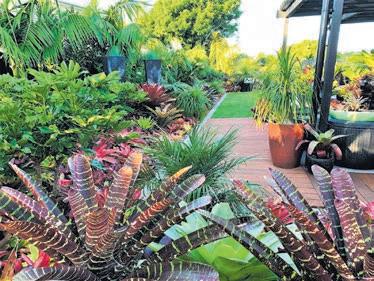
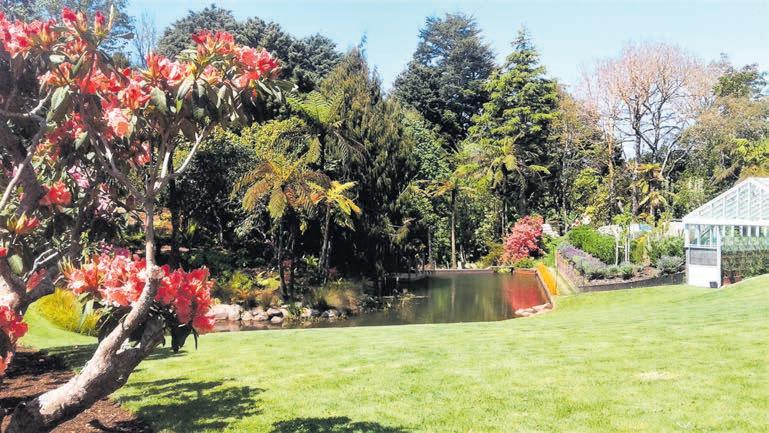

This year, we are excited to share with you 36 gardens and six places of interest throughout the region. We often get asked why Taranaki presents two garden festivals at the same time. The easy answer is that we have so many gardens worthy of attention, but there’s more to it than that.
In 2005, the Taranaki Garden Trust was formed to present real gardens created by real people. That is where we differ from the philosophy and focus of the parallel event. The gardens you will find in the Taranaki Fringe Garden Festival are unashamedly honest and real. Each garden tells an impressive story of passion, energy and effort.
We offer a large variety of gardens that range from those that are picture-perfect to those that are practical and achievable. This spectrum of gardens is chosen by design. We want you to go away brimming with inspiration and the knowledge that you, too, can create your own garden of delight regardless of the time, money, or space you have to hand.


Just as important as the gardens are the gardeners behind them, and the







trust seeks to celebrate their passion and achievement. That’s why we encourage you to meet the gardeners, share their stories, and learn from their adventures.
We’re committed to keeping things personal and accessible. Entry to any of our gardens is $2, as it was when we started 18 festivals ago. We acknowledge and thank all the supporters, volunteers, gardeners and others at the Fringe who have contributed their time and energy to what we do and to allow us to keep prices at that level.
Welcome to the 2022 Taranaki Fringe Garden Festival. We’re incredibly proud to be different and to have been so from the outset.
We thank you for your support and invite you to discover, share, and enjoy our real gardens for (and by) real people.
For more information visit our website taranakigardens.co.nz. Find us on Facebook facebook. com/TaranakiFringeGardenFestival and Instagram instagram.com/ taranakifringegardenfestival.
“I have always been interested in tractors and machinery. I started collecting tractors and implements six years ago. It was a hobby that turned into a major collection, so we decided to open it up and display it to the public in the past 12 months.”
Barry has single-handedly sourced a total of 33 tractors with some farming implements. He has owned John Deere tractors for the past 40 years.
“It was a brand that I liked at the time, and the passion has grown. I don’t have a favourite; they’re all my favourites. I can’t pick one out.”

As numbers grew larger, he decided to set up the collection for public display. Barry says it is the largest two-cylinder tractor museum in the Southern Hemisphere.
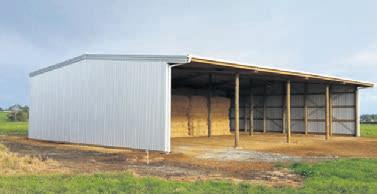
“The response we have had from the public has been fantastic. We solely collect two-cylinder John Deere tractors from 1936 to about 1960. It is a display that not many people know about, and it is huge.
“I haven’t had any challenges. For a while, it was trying to source tractors to help it grow. It has been a passion, and it has carried on. It is a reasonably large
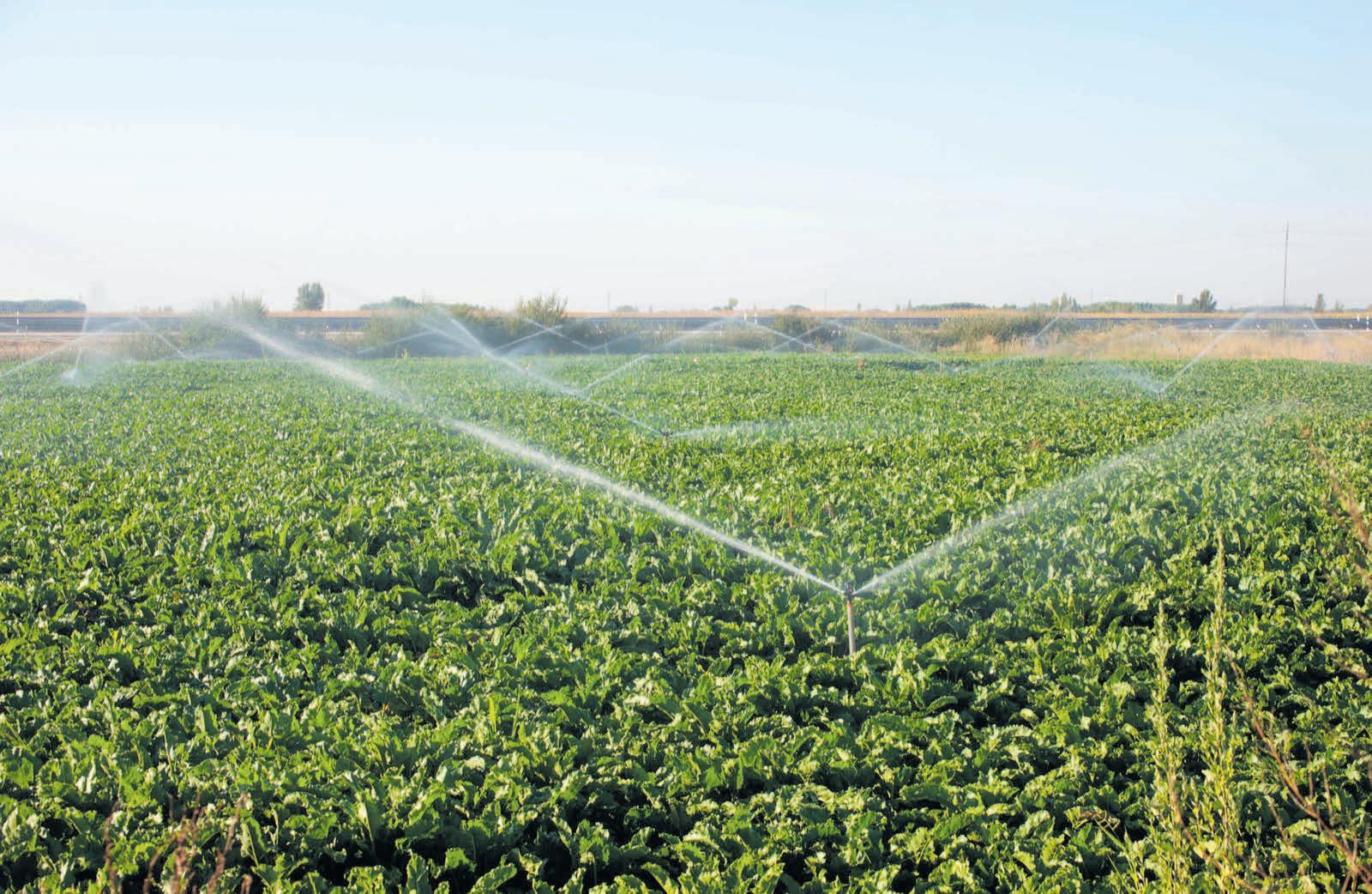
tractor display, and in one corner of the museum, we have a collection of John Deere models.
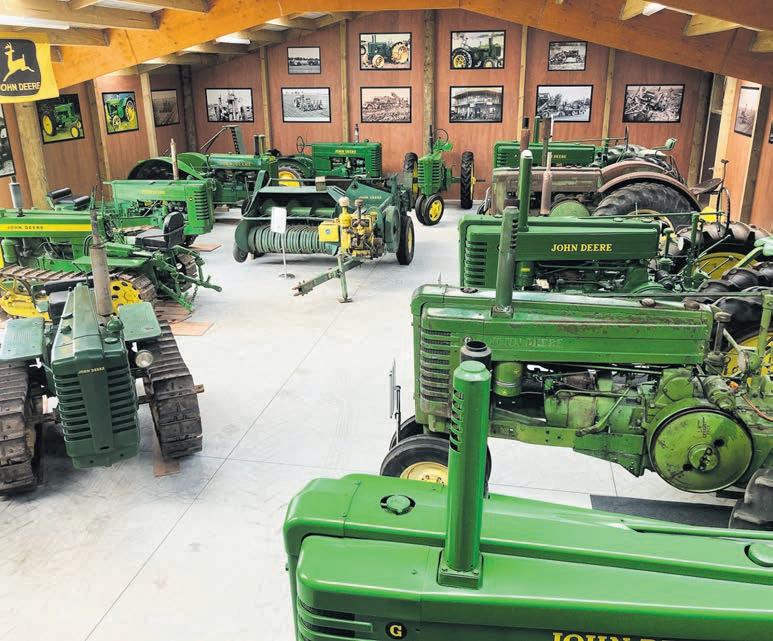
“It was a hard collection to do. I’ve sourced 10 from the United States, and all others were from across New Zealand.”

About four months ago, Barry acquired 10 more tractors and some farm implements. They were from private collector Graham Watson in Hastings, who shared the same admiration for these farming machines.
“Graham shares the same passion, and he was more than happy to see them come to a display with other tractors open to the public.”
Also featured at the museum is a countertop Barry made with a collection of John Deere pictures that were done by Connor from Attraction Signs.
“The highlights are having people come here and hearing them exclaim that they have never seen anything like it before.”
Barry has hosted groups from kindergartens, the Lions and Rotary Clubs, and car groups from various clubs. The museum is at 1914 Mountain Road, Inglewood, open on weekends from 10am to 5pm or for groups by appointment. For more information phone him on 027 447 9232.
“We prefer any big groups who want to come here to book, and we supply a cup of coffee. If a group wants to bring some

food along, we can put out some tables. People will be utterly surprised at what is displayed here for display.”

David’s great-grandfather, George Casterton Turner, purchased the original 64ha, known as the home farm, in 1890. George cleared the bushcovered land and, in 1900, built the homestead and sheds. Four years later, he established the Eltham Stud, breeding beef shorthorns until 1925. He also farmed Lincoln sheep.
An additional 36ha property on the other side of the road was purchased in 1915. The switch to breeding Romney sheep began in 1923 when George put a stud Romney ram to his stud Lincoln ewes. Rams continued to be bred and sold until 1982.
With the purchase of a further 40ha in 2003, dairy heifers were added to the farming operation. Two years later, the family bought another 23ha, bringing the current property size of The Grange to 163ha.



The farm is owned by a family trust, with David managing the day-to-day running of the sheep, beef and dairy support operation. His father, George, regularly visits to keep up with what’s happening on the property. A part-time worker is also employed.
“Our children, George and Sarah, the fifth generation, are often seen shifting sheep and helping in the yards or woolshed,” said Samantha. “Seeing the fifth generation showing interest in farming is one of the highlights.”
Close to half of the business is made up of heifer grazing on a weight-gain payment system. The balance is split between sheep and beef.
With the farm’s location close to Mount Taranaki, cold, wet winters are common, as well as frosts. The property, which
covers a mixture of flat to rolling country near Eltham, generally receives an average annual rainfall of close to 1,350mm.
Our cottages are a popular new addition to our safe and secure gated community. Built to an incredibly high standard, they are designed with your needs in mind.
Featuring open plan living, two bedrooms, modern appliances, and an outdoor living area where you can relax with friends and family – the ultimate in worry-free living as we also take care of home repairs and maintenance.

Buying our cottage at Summerset was the best move we have ever made. It is spacious, well-designed and beautifully finished. We were looking for lifestyle considerations, and our cottage at Summerset meets all our needs.
Robbie and Trish, residents of Summerset.
These homes won’t be available for long, so get in touch with the Sales Manager, Leonie on 06 824 8532 to find out more today!
*Licence to occupy.
By following our Covid guidelines it’s safe to visit our villages. For the latest information visit summerset.co.nz/covid-19
Climate farming policies in relation to reducing on-farm emissions have been challenging, and the Turners work closely with the Taranaki Regional Council. They’ve also worked to improve farm water quality and back-fenced to reduce winter pasture damage.
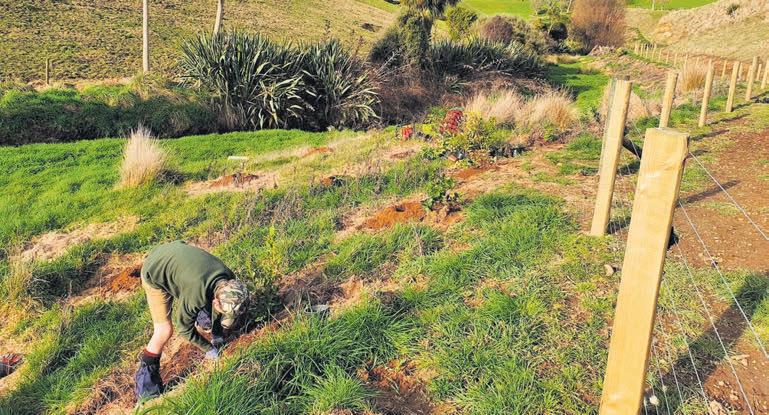


For the past six years, David and Samantha have purchased eczematolerant rams in an effort to eliminate this issue. David said considerable subdivision has taken place on the property, which has also seen the addition of a lane through part of the home farm.


“A gravity-fed water scheme has been added, which feeds both the home farm and over the road from a bore. Most of the waterways have been fenced off and planted.”
The main focus of the farming operation is to sustainably farm to suit
the climate and reduce environmental impact by matching livestock classes to land type.

“We do this by farming the sheep on the hills and slopes. The dairy heifers and steers are all farmed on the flat country,” said David.
“The R1 dairy heifers arrive in May at a light weight in the wetter season, minimising pasture damage over winter. They are farmed on a weight gain system and get heavier as the country dries out during the spring into summer, ready to go home as in-calf R2s.”
There are currently 260 dairy support grazers on the property from May to May. Fifty R1 and 50 R2 Hereford/ Friesian steers provide flexibility for the farming operation.
“The steers are not capital stock. This means they provide flexibility and can therefore be sold at any point to reduce our feed demand if required.”
A total of 620 mixed-age ewes are lambed with half of these to a Romney ram and the remainder to a terminal sire. In addition, 200 ewe hoggets are also lambed. Female Romney lambs are kept as replacements and the rest are sold prime. Supplementary feed grown each year on the farm includes around 20ha of hay and 20ha of baleage.
The Turners have plenty of goals on the horizon. Samantha said these include
finishing fencing stock exclusion areas and planting.
“We want to purchase low methaneproducing breeding rams, reduce emissions, and plant more areas for shade. We are planning ahead to help reduce the impact on our business by climate change.
“The long-term goal is to farm this inter-generational asset in a sustainable manner well into the future,” she said.
y neighbours had donkeys and that piqued my interest,” said Barbara.
Later, after moving to Australia, Barbara found a solitary donkey at an auction and bought her. Another donkey soon followed. “They were companion animals for my cattle.”
Donkeys have become highly sought after in Australia as livestock owners use them to protect their stock.



“They’ve discovered that if you put donkeys in with sheep, they won’t let dingoes in. Like guard animals. I used to see donkeys chase dingoes out of the area.”


When Barbara returned to New Zealand in 2004, her horses and dogs came too. She bought a lifestyle block out the back of Inglewood and soon afterwards acquired a mule to join her herd.
“I grew up with horses as a child. Grandad was a jockey and mum rode. I’ve had horses all my life.”
Barbara was one of the first women to study towards a Diploma in Agriculture at Massey University. “It was the first year it was opened up to women,” said Barbara. “I then went overseas and spent 30 years working with sheep, cattle and horses.”

In 2005, Barbara became a member of The Donkey and Mule Society of New Zealand and an area representative for the society. She was offered a position as trustee for The Donkey and Mule Protection Trust in 2011.
Donkeys are surrendered to the trust and rehoming centres due to a number of issues, mainly financial. “Vet expenses, farriers and supplements all add up over time.”











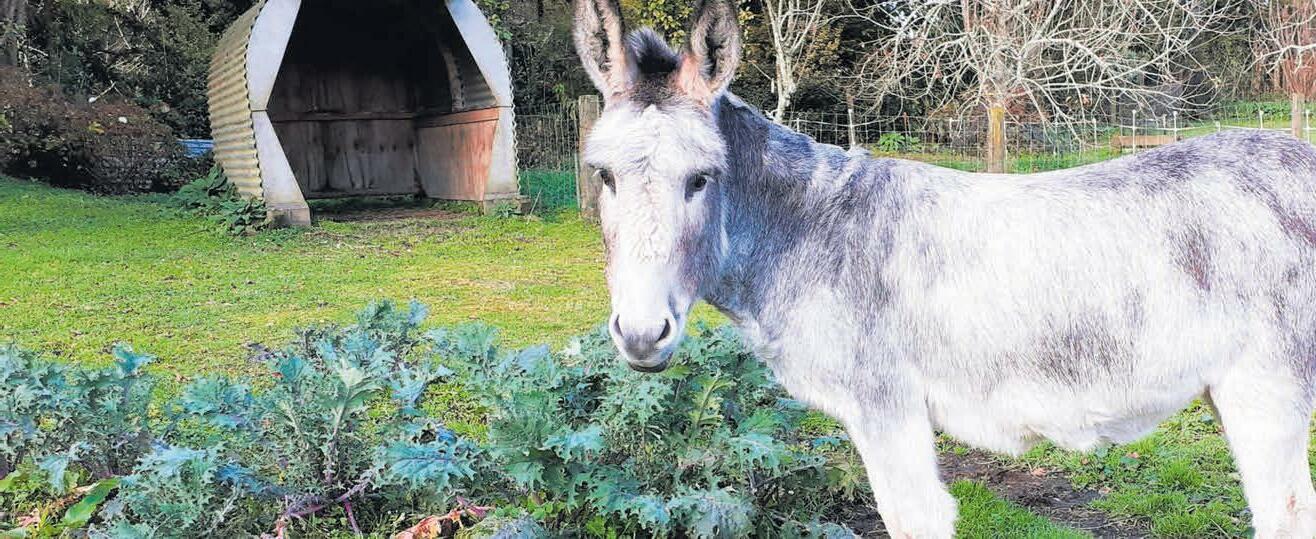
When donkeys in the Taranaki region are surrendered to the trust, Barbara transports them back to her property. The donkeys receive dental care, castration if required, a microchip and have their hooves trimmed.

“With the trust, we try and educate people. If it gets too much for them, we end up with the donkeys. We are all experienced and help each other. It’s all about the donkey. We rehabilitate and rehome them.”
As desert-bred animals, donkeys’ dietary requirements differ slightly to horses and people are often unaware of their needs. “They have a differentshaped stomach from a horse, so they need a lot of roughage. Too much green grass causes laminitis.”
Barbara said the trust spends a lot of money on gelding donkey jacks. “Greg Hall of Inglewood Energy Vets is amazing. He has gelded so many donkey jacks over the years. The trust pays for most of the vet bills but my grazing and time is free. I do it for the love.”
Since becoming a trustee, Barbara has rehomed 80 donkeys in the last 10 years. “Some donkeys come here and end up staying here. I’ve had donkeys that have been fed the wrong diet, no teeth and arthritis. So they stay here as a last act of kindness.
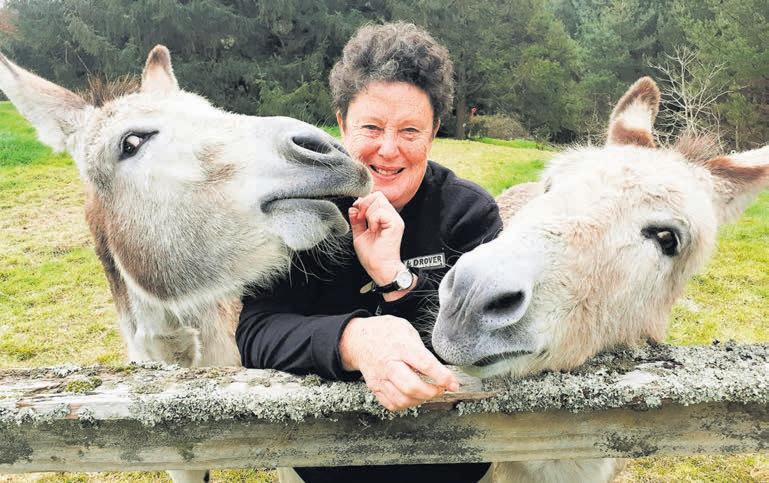
“People have to realise donkeys can live up to 40. It’s usually around 30, but the odd one can get to 40. Mules are the same.”
Barbara finds donkeys to be extremely clever and very loyal. “When they bond with you, they love you to bits. Some that have been badly treated take a while to rehabilitate. They have to get that trust back again.”
She said training donkeys is similar to horses, taken step-by-step and always
finishing on a good note. Barbara also rehomes retired working dogs. “They make fabulous companions.”
Applicants seeking to apply for a donkey are required to fill out an online form on the trust’s website donkeymuletrust.org. nz. They will then be directed to a regional rehoming centre.


“Donkeys are a herd animal. They are social,” said Barbara. “Donkeys need to be rehomed with others. Our policy is we do not rehome singles unless they are going to a home with another donkey. They need their own kind.
“We are a small organisation and rely on donations. People may like to adopt or sponsor a donkey. For $1 a day, people get regular updates on their donkey. More can be donated if they want.”





The couple comes from a farming background, and Amanda moved to Taranaki in 1994. Aaron has been a Pohokura local, excluding one year. They bought part of his family farm and have recently started leasing the remaining farm, which offers scale to their breeding operation.
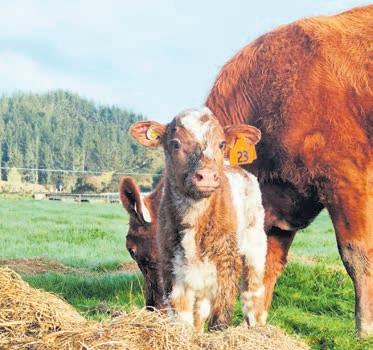

in different areas of the country — Hawke’s Bay, Wairarapa and Taranaki,” Amanda says.


“The further you head away from the 50-kilometre sign of the town, the closer-knit the community is. We are 52 kilometres from the closest town, and our closest neighbour is about 20 minutes away, but it doesn’t feel like it.”
“We have two girls. Ruby is 11, and Lucy is seven, so a lot of our hobbies are associated with them. The council work fills any voids in the timetable.”
Initially, they started breeding the easycare Wiltshire sheep. Amanda says they liked how they looked — at the time, they weren’t a popular breed.
 BY AMY FIFITA
BY AMY FIFITA
“I married into the area in 2010, but I come from a farming background, so it is not foreign to me.
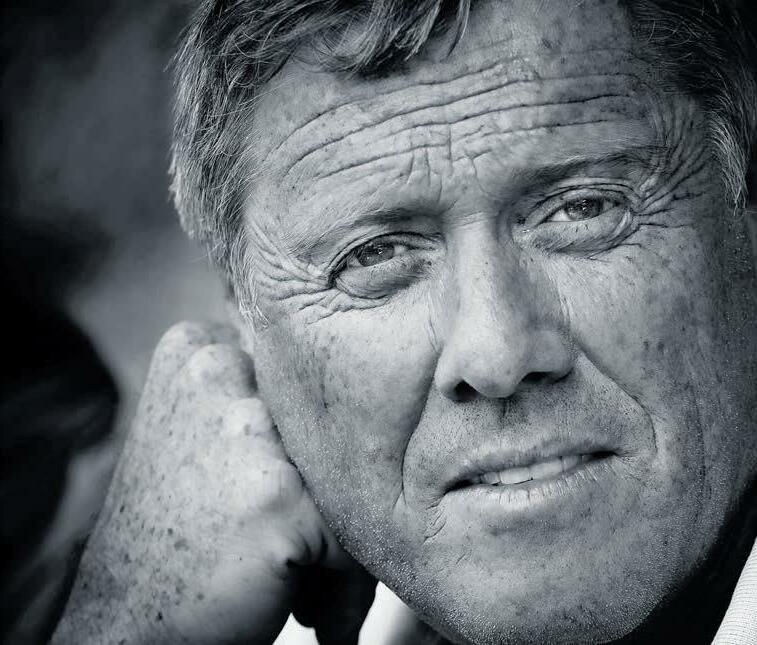
parents are
managers
Amanda has close ties with working in the community and has just finished her first term as a Stratford District councillor.
“They weren’t popular until about three years ago. Regardless of their popularity, we like them as an animal, and they suited our country quite well.
“We bought our first Wiltshire ewes on our honeymoon. It was in 2010, and we have been breeding them ever since. We started small and have bred up from the original flock.”
Aaron had an influence in the breeding of Shorthorn cattle, and he says that he likes the variety that the breed produces.
“They are a minor breed, and the breed association is a bunch of good people, which has been quite supportive. We started with a small mob, and we gradually moved up to calving 48 pedigree animals this year.

“They are a maternal breed. The colours are a bonus. You don’t know what you are going to get — a white cow can have a red calf and everything else in between.”
Amanda says that while they are minor breeds, people should give them an opportunity to show their benefit.
“Sometimes minor breeds can get a lick of the brush from the breed in general. Variations within breeds can be vast. We would welcome anyone to come and have a look in their working clothes on-farm to see how they do in the situation.
“I couldn’t farm without either of them. The Wiltshires get a bad wrap for being energetic and spirited, but I could imagine it without the attributes of the Wiltshires and Shorthorns.”
Helping support their endeavours is Mill House, which they offer to the public
as accommodation. The 1900s villa gives guests opportunities to learn and creates a talking point for the farms Wiltshire and Shorthorns. They have been running it for four years.
“It is on the Forgotten Highway and is a little way from anywhere, but we are finding a lot of people are travelling through or to the area.
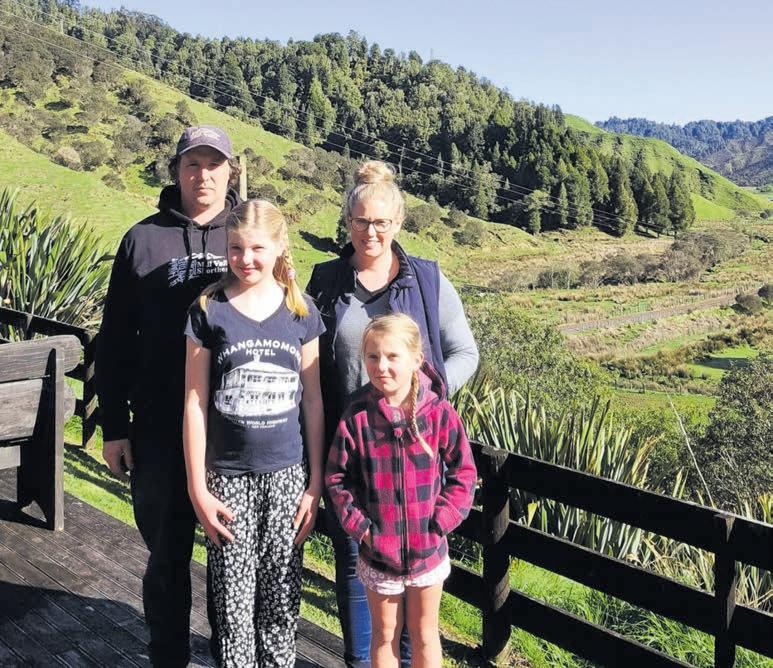
“We’ve learned to trust our instincts. If something is not popular, continue through with what you have got. For instance, the Wiltshires weren’t for a long

time. Popularity will wain with every breed, and not all farms are the same.

“A recent highlight is owning the block we are on now. We were leasing it for a while, and it has been a real achievement for us to have that landholding. It provided us with scale and an ownership badge.


“We hope to purchase our new lease block one day. We intend to retain the quality, but being able to have more so we can pick through the traits we like and put the breeds on the platforms they deserve.”


Since joining
strong sales across the
than
year ago,
From a local farming background and, latterly, in rural banking, consultancy and real estate, you couldn’t get a more competent salesperson who knows virtually everything there is to know about Taranaki agribusiness.

Conversant in complex farming systems, Greg can articulate the features of rural properties and their farming operations, adding real value to the sales process.
Greg’s knowledge, coupled with the support from the Property Brokers brand,
including leading-edge marketing in print and online media. He also has more than 90 colleagues that specialise in rural real estate spread throughout the length of New Zealand, meeting regularly to share information, including properties for sale.

The added competition for properties due to a larger team that works well together saw some extraordinary sale prices last season — give Greg a call to show you the PB difference. Greg O’Byrne, rural sales consultant, contact 06 920 3323 or mobile 027 598 3000.

OK, so the government doesn’t want to listen to farmer groups about the impracticality/fairness of the proposals around farm emissions; and they don’t want to heed warnings from economists about the potential for food prices to rise because of this. But is it too much to ask them to say where they expect the closure of meat works?

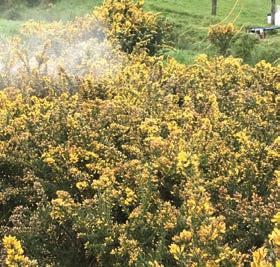


Because that is the inevitable consequence of the mass displacement
of meat and wool farms with carbon forestry. Hundreds of thousands of stock units have already been lost, more soon to follow. Job losses in the meat works will be significant — into the thousands.

So come on, ‘powers that be’, tell us where so that workers and managers can prepare. The impact is not far away. Surely, dealing with this is part of your planning?
Regards, Richard Alspach Dargaville
In the early 1900s, the advent of co-operative dairying saw the rise of new patents registered with the government.

In 1903, the invention of Wellington College teacher and former dairy farmer George Hutchinson caught the attention of farmers and an intrepid reporter at the Palmerston Show. The machine was boasted to mimic the human hand when on the cow’s teats. At the time it was on exhibition, Hutchinson was still looking for investors to see his machine revolutionise dairy farming nationwide. The prospectus explained the machine’s actions.
‘The teat is squeezed by bags of water, and the milk is pressed out, no suction being employed. The water bags act on the same principle as hand milking. The bags, while exerting any desired pressure,
are softer than even human hands. It is silent in work, requires very little power, is simple inaction, and is cheap to make. So little power is required that a boy will probably be able to drive a machine to milk, say 12 cows at a time, which will suffice for herds of upwards of a hundred cows.’
By 1906, the Hutchinson Non-suction Milking Machine Company had been established with George Hutchinson as managing director. His unit was installed in the dairy shed of Southland farmer James Sinclair. While the advertising declared Hutchinson’s invention was ‘an established fact’ in 1906, it became a footnote in dairying history.
 by John Arts
by John Arts
I recently spoke with a client I have been helping with painful knee Osteoarthritis (OA) for nearly two years.
When we first spoke, he needed strong pain relief just to walk for exercise. We agreed that pain medication use would be a good measure of his progress. After six months, he said the pain had completely gone, and no longer needed pain medication. Now a year later, he is still pain-free.
Any successful programme to improve joints affected by OA should address the underlying disease process. OA is a disease that is characterised by cartilage loss due to both mechanical and biochemical processes. The major process is the loss of cartilage caused by progressive damage to specialised cells called chondrocytes. These cells live in the matrix of cartilage and are responsible for maintaining and repairing cartilage by secreting new cartilage where required.
However, these cells are vulnerable to destructive processes brought about by trauma, such as sports injury or a disease process called oxidative damage. It just means that cells and cell structures have been damaged by free radicals.
The main source of discomfort in OA is inflammation in the joint capsule resulting in pain, swelling and, in some cases, heat and redness.
While bone on bone can only be repaired by surgery, the discomfort from inflammation and cartilage loss can respond very well to nutritional therapy.

While curcumin (from turmeric) can help with inflammation, the most important joint support compound is high-grade chondroitin sulphate. Research suggests at least 800mg daily. I like to start most clients on an intensive programme delivering 1,600mg of both chondroitin and glucosamine and 400mg of a highpotency curcumin extract. That, combined with therapeutic doses of omega-3 fish oil, can make a real difference.
John Arts (B.Soc.Sci, Dip Tch, Adv. Dip.Nut.Med) is a nutritional medicine practitioner and founder of Abundant Health Ltd. For questions or advice, contact John on 0800 423 559 or email john@abundant.co.nz. Join his newsletter at abundant.co.nz.
“OA is a disease that is characterised by cartilage loss due to both mechanical and biochemical processes.”
From farmers eager to get their annual rural event fix to townies looking to get a taste of what’s on offer, Fieldays 2022 at Mystery Creek will showcase the food and fibre journey from farm to plate.
There’s to be the added spice, of course, of all the fun of the fair for families, with top entertainment, exotic food and beverages, new products on offer and a great way to welcome in the summer and festive season.
As New Zealand and the world begin to look back on the stresses of the pandemic with its opening borders and dropped gathering restrictions, the New Zealand National Fieldays Society is on track to open from Wednesday, November 30, to Saturday, December 3.

The event was scheduled to run in June. CEO Peter Nation says the new dates this year ensure the Fieldays operate to its full potential. Around 13,000 contractors come and go in the lead-up to the event, building the small city that is Fieldays, which was not possible under the red traffic light setting.
“Our aim is to run a safe, secure, and successful event, ensuring Kiwis can come together and reconnect, enjoying
the best of what Aotearoa’s primary sector has to offer,” he says.
Based on a 114-hectare site at Mystery Creek, 10 minutes from Hamilton, it’s the largest agricultural event in the Southern Hemisphere. On-site this year will be the Innovation Awards, a launch platform for primary Innovation with a total prize package of more than $60,000 worth of cash, services and products.

Programme developer Steve Chappell says the prizes are designed to help innovators to accelerate the growth of their products. “We are thankful to our returning sponsors for their continued support of the awards and new sponsors on board this year, to expand the potential opportunities for our prize winners.”
Full details of the prize package for each category can be found on the event’s website, where expressions of interest are now open for the 2023 competition.
Fieldays is also partnering with the Ministry for Primary Industries (MPI) to launch a careers opportunity, which will
Visitors turn out in record numbers for Fieldays at Mystery Creek showcase the food and fibre sector, sitting under a strategic event pillar of education, for attendees to learn about food and fibre career pathways and consider joining a thriving sector.
MPI’s director says primary industries have grown despite the Covid-19 pandemic. “New Zealand’s food and fibre sector is leading the nation’s recovery from Covid-19 by keeping vital food and fibre flowing domestically and overseas. For the first time, annual export revenue reached more than $52.2 billion in the year to 30 June 2022.
“With such a key sector contributing to the New Zealand economy and the


wellbeing of our rural communities, it’s important we have the necessary workforce to meet the demand,” says Ray Smith.
“There are rewarding, life-long careers available in food and fibre right across the supply chain, ranging from work on-farm, in science, technology, business management and logistics, to animal welfare, marketing, and research and development in locations across the country.”
Tickets are available online, ranging from adults valid for one day at $30 and child at $15 to a four-day adult pass at $100 and a one-day family pass at $90.
If you have corrosion problems, Prolan


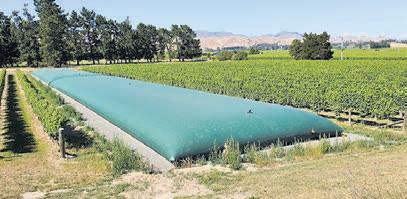
in New Zealand from lanolin.
Prolan lanolin lubricants and grease lubes have a natural affinity for all metal surfaces. Once applied, it will stay on for long periods by forming a natural barrier that prevents corrosive agents from penetrating the surface.
The application of a Prolan coating can protect your vehicle chassis from rust long-term. This coating will help vehicles pass their annual WOF or COF as it stops rust forming and is recommended by vehicle testing centres. The product is being used to prevent corrosion on 4WD chassis, motorhomes, quadbikes, boat trailers and fertiliser spreaders.
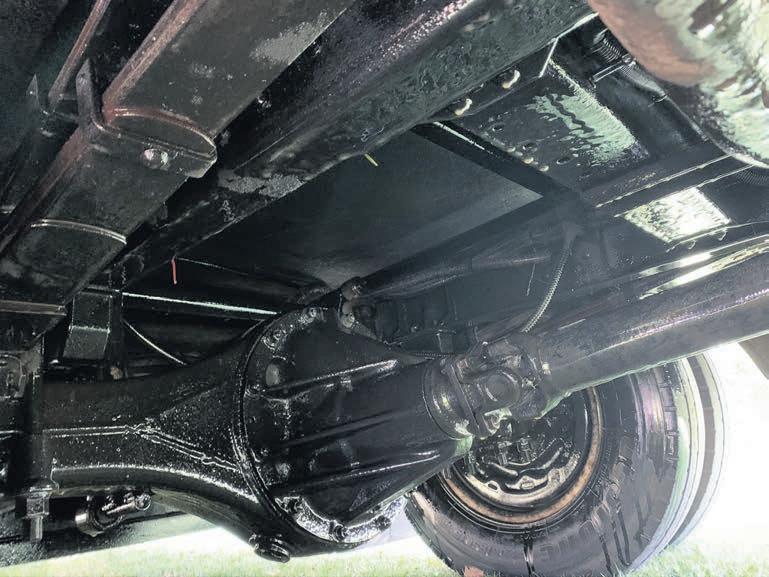
A quad bike running on a dairy farm with no corrosion protection can rust out within three years if it is not continually maintained. Once purchasing a vehicle or quad bike, the best treatment you can give the chassis is a coating of Prolan. With regular coatings, the chassis will still be in excellent condition years later, increasing the resale value and making maintenance easier.

After a coating of Prolan, it is easier to remove dirt and mud off your chassis; even cold water blasting will not

remove the coating. The coating is also safe on rubbers and wiring. Minimal preparation is required for the surface to be coated. If there is existing rust,

Prolan can be applied, and will stop any further corrosion.

Prolan’s unique, versatile products are made in New Zealand and exported to Europe. It is used in some of the toughest and coldest environments, protecting machinery, vehicles and even wind turbines. With a growing trend for environmental friendliness and biodegradable products, Prolan ticks all the boxes — Prolan is safe to use and easy on the environment.
Prolan has an increasing number of retail outlets stocking its products throughout NZ. Check out the website prolan.co.nz or Facebook Prolan New Zealand or call 0800 PROLAN (0800 776 526). Visit us at the Mystery Creek Fieldays — Site F11/F11A.


Go Karts Direct is an exclusive importer and distributor of go-karts for the New Zealand market.
Time and time again, New Zealand farmers say they are frustrated with feed going to waste.
Having established a reputation for quality drift go-karts, the Drifta brand has been developed to include 10 different models, including single-seater and double-seater karts.
Fun for all ages, our single-seater drifta karts are ideal for lifestyle blocks, farms, orchards, paddocks, fields, and reserves. They are safe and easy to operate, having a low centre of gravity — their design enables them to drift rather than roll.
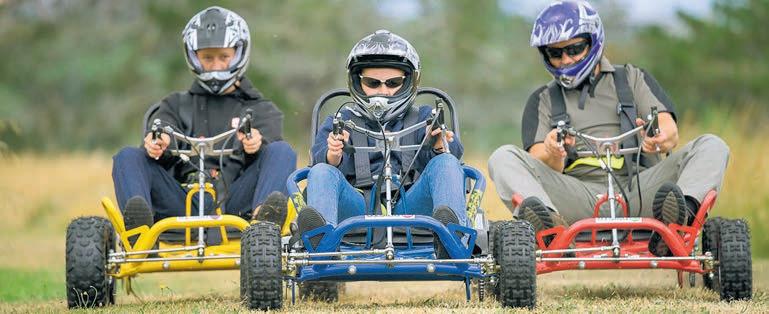

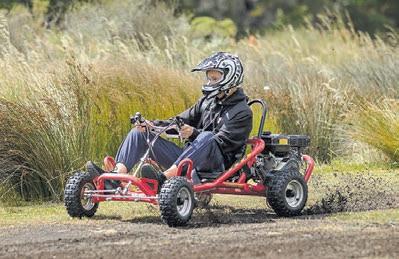
They are a great way to learn driving skills, gain confidence and have lots of fun!
The team at Go Karts Direct pride themselves on offering friendly and


professional service, with backup support and technical advice. Our full range of spare parts is also ideal for building your own kart or other DIY projects.
The Go Karts come pre-assembled in a box, and we can freight to main centres anywhere in New Zealand.
We offer affordable products, so children and adults can have hours of enjoyment and outdoor fun.
By eliminating high overheads and retail mark-ups, we pass the savings on to our customers. For more information, photos and video — visit gokartsdirect.co.nz.
Alternative systems like hay and meal feeders can help ensure minimal feed wastage and protect feed from the elements.




Gary and Glennis Wilson from Wilco Engineering are farmers themselves. They know the importance of quality products that are practical and last a lifetime.

Wilco feeders are user-friendly — saving you valuable time and money. To put the feed savings into perspective, if you are paying $10 a bale, this could amount to $20 a bale if your livestock only eats half of it; the rest gets trampled through the mud or water gets into the meal. Wilco feeders reduce this problem, helping you to cut costs in the long term.
Whether you have a dairy unit, lifestyle block, alpacas, goats, sheep or horses, Wilco has a feeder size that will make your life so much easier. Feeders come as hanging, skid, or two or three-wheeled mobile hay racks (with optional removable meal bins) sized from one to four bale capacity.
Our many repeat customers are a testament to the quality, convenience and value. Wilco Engineering feeders are designed for everyday use on the farm and are the ideal solution due to their strength and durability.
All products are made in New Zealand and fully galvanised to ensure the best quality and performance. Contact us today on 07 322 8196 to order yours.
Strong, completely mobile and in a range of sizes to suit your farm’s needs.

Strange but true; often, the newest technology in farming is introduced to the public via computer game which replicates the modern farming process.

The latest Farm Simulator edition delves deep into the makes and models of harvesters, tractors and trucks you can deploy on your virtual farm. It requires players to micro-manage their operations to a degree of precision real farmers might find baffling. It’s like the attention to detail motor racing fans would find on the latest Gran Turismo via Playstation, and this time, there’s an all-electric tractor option to play.
The Rigitrac SKE 50 is not virtual reality fiction, however. It’s an on-farm fact, hailing from Switzerland. The small

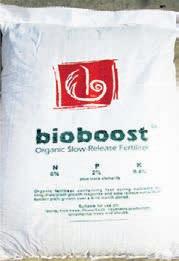
utility tractor boasts 68 horsepower and absolutely stump-pulling torque thanks to five electric motors, one for each axle, one for each PTO coupling, and one for dedicated hydraulics. Battery tech cribbed from high-efficiency autos ensures that even when all five motors are spinning, the little Rigitrac can work hard for five hours on a single charge.
That alone was enough to win the SKE 50 a Swiss innovation award. Previously, battery tractors were dismissed as a practical improbability due to the need for heavy batteries. With concerns about
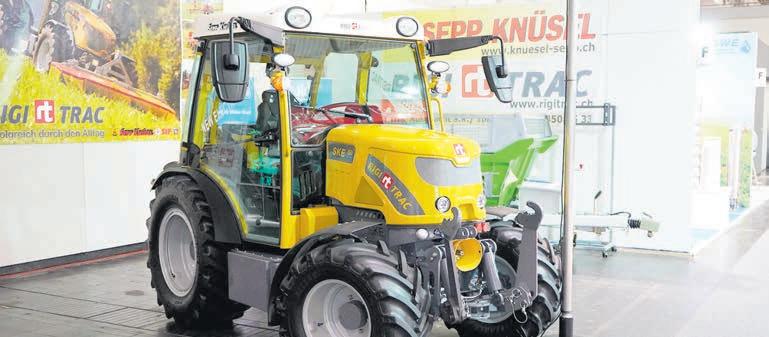
deep soil compaction, the real monsters and heavyweights of farming may not ever be able to be battery-powered.

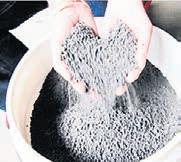
There’s a cruel curve of mathematical correlation between horsepower and the weight to hold a powerful enough charge to generate it. In 2018, for example, John Deere was experimenting with an autonomous electric tractor that ran on an extension cable up to a kilometre long, busting the battery problem.

Keeping things small and playing its position as a utility tractor means that the Rigitrac all-electric machine tips the scales at a mere 2.8 tonnes — less than some big sports utilities. The Swiss engineers behind the project have even added a Toyota Prius-style regenerative braking system, which can help recharge
the battery during road trips. Its on-road speed is approximately 40km/h.
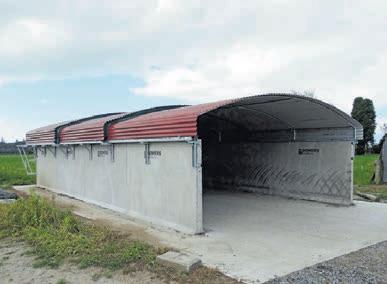
The Swiss offering is not the only one in this growing segment of the market, which has leapt ahead of the electric ute, another promised future tech Kiwis have been waiting to see reach fruition. Fendt produces a Vario model with a five-hour operation time, while US company Solectrac has an eight-hour battery life on their small orchard and vineyard tractors. Case has even embarked on the fantastically titled Project Zeus to create an electric backhoe for the construction industry.
Will electric power fill the utility and small tractor gap on future Kiwi farms? Only time will tell. Alternatively, you could log in to Farm Simulator 22 and have a go with the Rigitrac, as a kind of virtual test-drive.
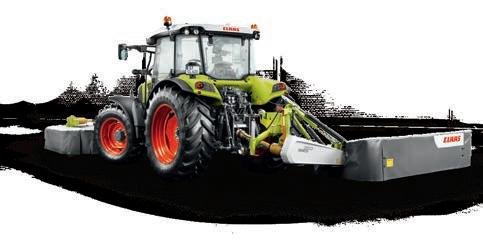

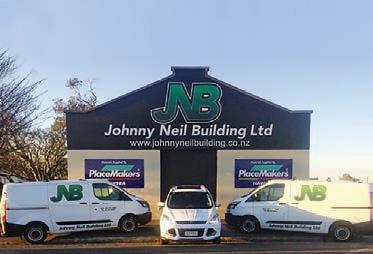 by Andy Bryenton
by Andy Bryenton
Henry Ford famously replaced the horse as a means of on-road transport by introducing the affordable Model T. Still, it wasn’t until 1982 that the farmer found a better way to tackle tough terrain.
The quad bike is 40 this year, and it’s come a long way since its introduction way back in the era of denim on denim and big moustaches. However, it was a torturous path through some hit-and-miss ideas which led to the quad layout becoming so successful.
It all began back in 1893 with a brand that’s still around today. Royal Enfield created a quadricycle, or four-wheeled motorbike, back when Queen Victoria was still in charge and gentlemen dressed like Sherlock Holmes. It was meant to replace light horse-drawn buggies of the kind the Amish people of Pennsylvania still utilise, but it never took off, and Enfield went back to bikes.
During the second world war, bikes were popular for speeding messages to the front, sidecar-mounted machine guns were a strategic asset, and the king of the battlefield was the tank. Combining all the worst properties of all three, the German

Sonderkraftfahrzeug was an odd attempt to solve the problem quad bikes would handle many decades later. Steering with handlebars but driven by tracks like those of a Panzer, the machine had neither the nippy speed of a bike nor the oomph of a battle tank. Also, the name was impossible to pronounce.
Things were quiet for a time until an unassuming Japanese auto engineer from Honda, Osamu Takeuchi, was given a very open-ended design brief by his bosses. ‘Make us something that uses a motorcycle engine but will sell well in winter’, they told him and he obliged.

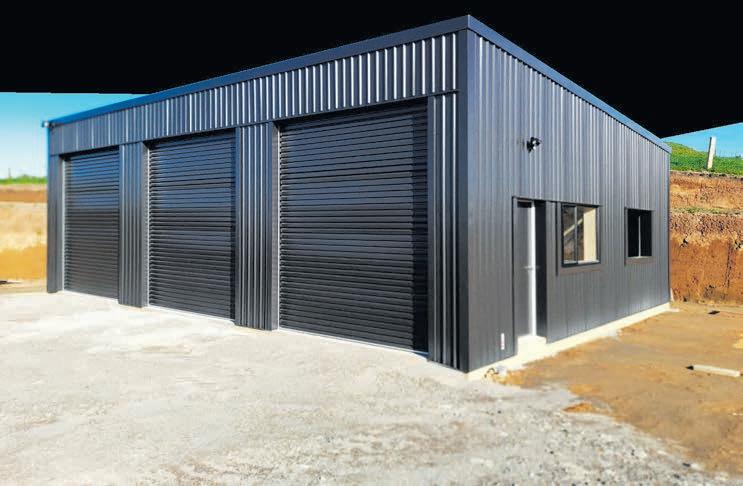
Honda’s chief Soichiro was perhaps expecting a snowmobile, but instead he got the ATC90, a balloon-wheeled trike with a seven-horsepower engine and a tiny price tag of $600 at the time.
Honda dealers in the US sold them as fast as they could get them, mainly for recreation, although farmers in other
During the years, many tried to come up with a way to make a motorcycle work in truly rugged terrain; the Germans did not really nail it during the 1940s parts of the world where the mud was a winter problem took note. Some of those farmers were New Zealanders.
Suzuki came to the Kiwi backcountry to develop a new project in the early 1980s, an attempt to make a safer, more stable off-road bike. They avoided the German idea of treads, added one more wheel, then put the resulting machine through its paces. Thus the
QaudRunner LT125 was born, and the rest is history.
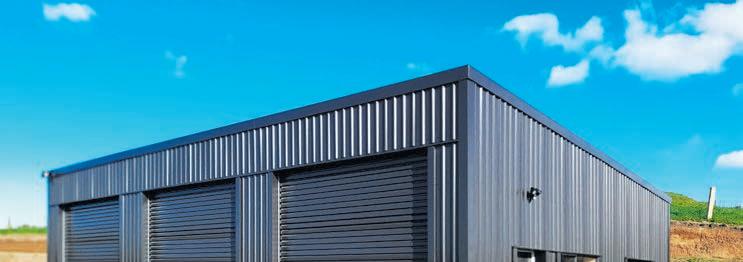
Other companies, seeing the utility and practicality of the basic idea, all put their own spin on the quad concept. They developed memorable names of their own, engaging in a war of horsepower and safety, grip and torque that has greatly benefitted the Kiwi farmer. Cheers to 40 great years, quad bikes! Who knows how they will evolve next?












Heavy is the head that wears the crown, they
or, in other words, it’s hard to stay at the top when you’ve been given the title of king.
There’s an exception to every rule, however. While some might opine that Elvis is the exception to this one, a better example is found in Suzuki’s ATV line-up. The Kingquad has been waving the sceptre as Suzuki’s flagship offroad machine for many years now. Rather than diminishing with age, the brand just keeps getting better, with small improvements to each generation.
Take the 2022 Kingquad 500XP, for example. Yes, it’s built on the same no-nonsense platform as its illustrious predecessors. If the formula works, why change it drastically? Four decades of feedback on stability and handling have been packed down into this big red machine. However, there have been some improvements, as told by the figures.

Start with frame tubing that’s 25 per cent thicker for more stiffness, rigidity and more ability to handle punishment from nature. Then add a towing capacity bumped up to 600kg, extended suspension travel on the independent suspension for all four wheels, and bigger brakes, and the picture begins to emerge. Power is delivered by a four-stroke, liquid-cooled 493cc Suzuki

engine, with internal tech informed by years of building bikes that win races and quads that work hard.
The Kingquad’s instrument cluster has been upgraded to be easier to read. At the same time, the power steering system on the 500XP is more responsive than ever, making for an easier day in the saddle. A smoother CVT gearbox delivers horsepower to the ground with no need for gear changes.
Suzuki got the whole ATV game started here in New Zealand back in 1982 when the mullet haircut was new, and Eye of the Tiger from Rocky was the number one pop song. From the LT125 of those days to the big Kingquads of the present, Suzuki’s story is one of constant and incremental innovation, adding new features and upgrading power and comfort with each new model. Give one a test ride this spring and find out why so many farmers say ‘hail to the king.’
Cridge Seeds
situated
near the Rakaia River -

Canterbury. 50km south
hunting,
and white-baiting which
of
for
over the
Stuart Cridge who formed the company in 1982 is no longer involved due to health reasons, but his wife Julie is carrying on after 23 years involvement and has well known family background of farmers in Canterbury being bought up in Malvern. Stuart, and Julie’s son Nick is manager and he grew up around the company from a young age, learning many skills from Stuart including specialist seed cleaning.
Cridge Seeds has already been a long established business over the past 40 years and they have dealt with a wide


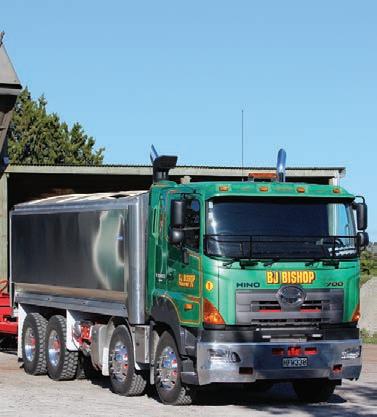




of
throughout New Zealand which they intend to continue.
“The Kingquad’s instrument cluster has been upgraded to be easier to read.”
At BDO Taranaki, we know farmers are working hard to operate as sustainably as possible, and we understand that constantly changing regulations are difficult to manage.


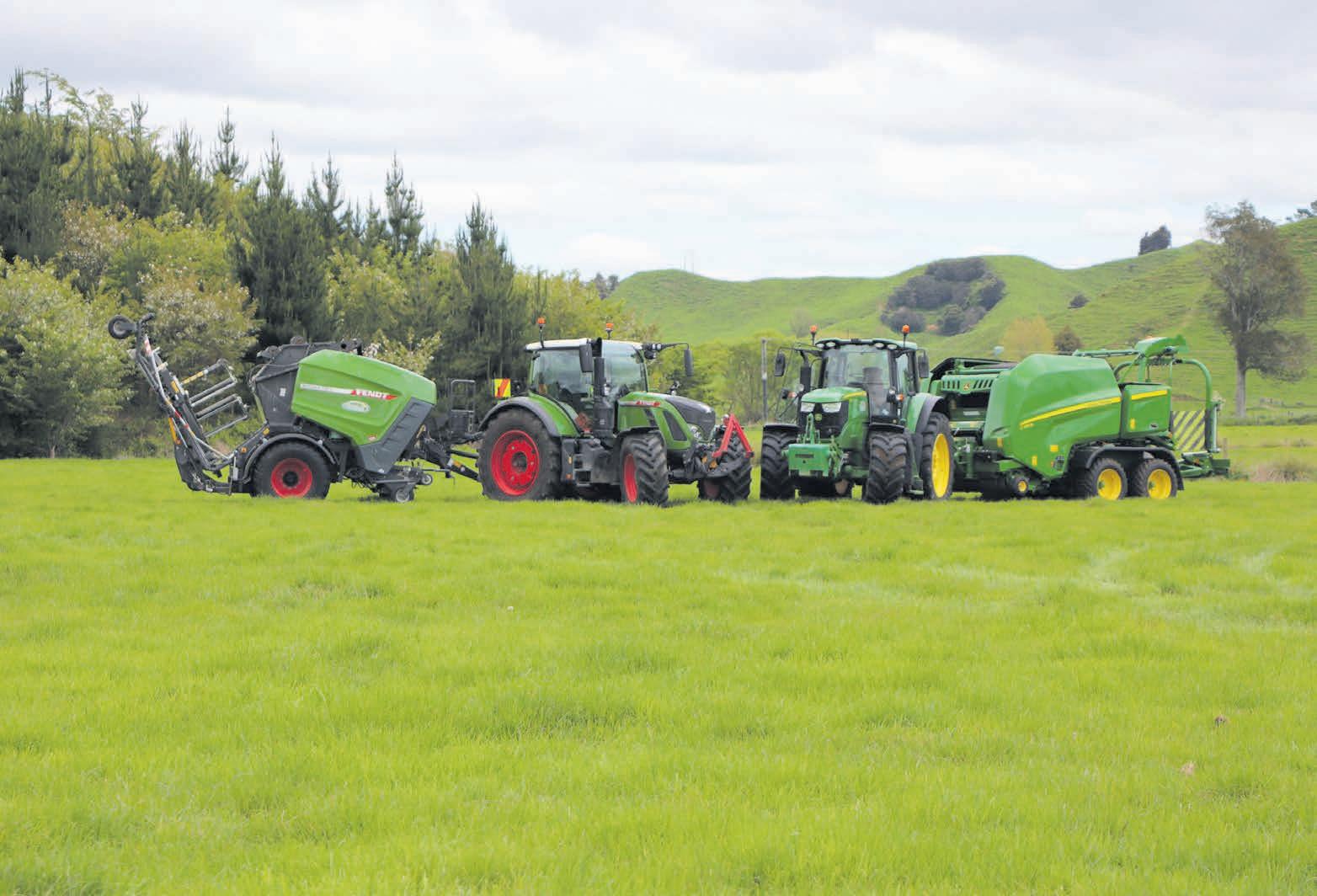

Often, it’s hard to know where to start.
Aaron Waite, an owner of Waimacher Farms in Taranaki, has always been passionate about sustainability.
With seven waterways running through the farm, effluent management, nutrient leaching and water quality are all significant factors when it comes to Waimacher Farm’s environmental impact.
To try and offset these, Aaron invested in a herd shelter. It enables him to remove his stock from pasture during the autumn and winter seasons, when plants aren’t as absorbent, meaning nitrates are most at risk of leaching into waterways.
The herd shelter has a woodchip base that retains nutrients from effluent, which Aaron then spreads on the pasture later in the year.
This herd shelter and a new effluent pond have been key tools for the farm’s pivot towards more sustainable nutrient management practices, as have the scaling up of a programme of riparian planting along the farm’s waterways to provide a buffer against nutrient run-off.
“These are only the first steps on a long journey towards environmental sustainability, but even these changes have required a significant rethink of
the farm’s financial management and business structure,” Aaron said.
That’s where BDO comes in. As part of our sustainability service offering, we provide financial transformation and accounting services to businesses pivoting towards a more sustainable model.
Like most, Aaron’s team are on a journey. Still, each win is a step towards that better place. What’s your next step?
If you’re thinking about moving towards more sustainable farming practices, we can help. Talk to our local BDO Taranaki Agribusiness team today to find out more.

want to leave the
kids’ kids,” says Aaron Waite of Waimacher Farms in Taranaki.BDO provides sustainability-based agribusiness solutions for better farming practices
The competition is hot, and the rivalry fierce, as a
of top models compete to be 2023’s Tractor of the Year under the eye of 26 seasoned judges in Milan, Italy.

Milan is more famous for judging the cutting-edge of fashion. Still, since 1998, an international panel of agricultural implement specialists and critics has met in Europe to decide which of the next model year’s tractors is a cut above the rest. This year, the announcement of finalists was made back in July, as manufacturers debuted their future tech for the next season and judges put them through their paces.

On November 9, at the huge EIMA International trade show and expo, the top machines will receive their awards, setting up a year of excellent publicity and sales for the front runners. New Zealand tractor dealerships eagerly await the news, as a top award in Europe translates to serious bragging rights across all of the national field days and rural show events.
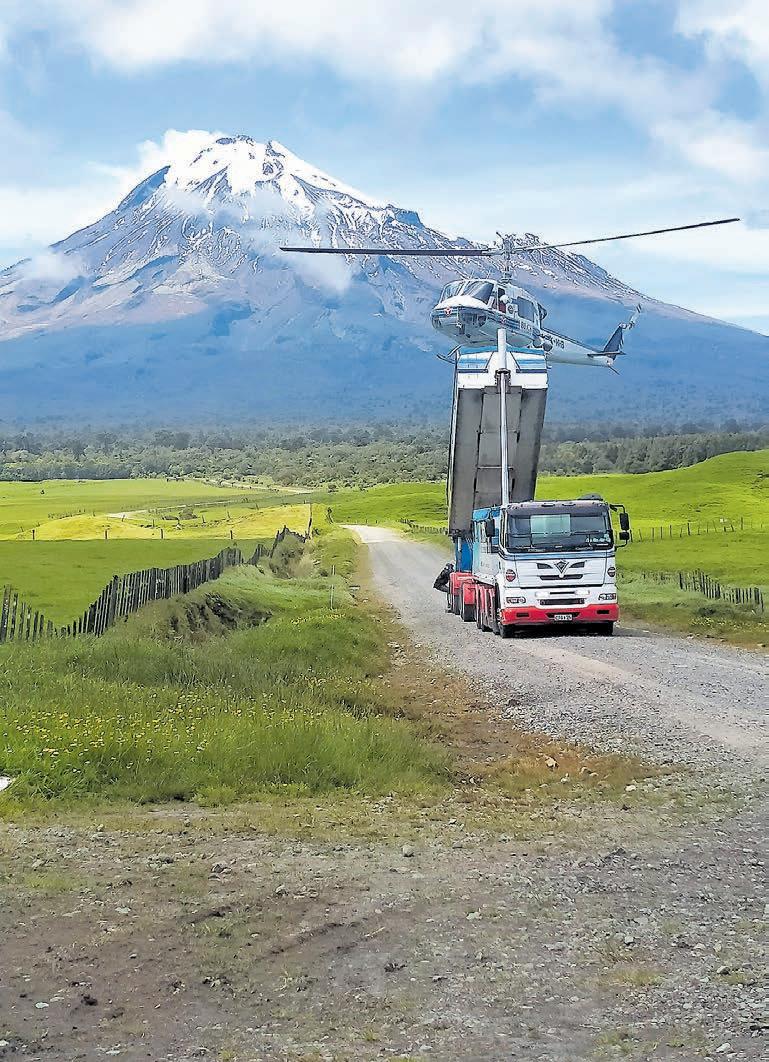
The contenders are lining up with a variety of core points, which they hope will gain the gold. There are five tractors in the race for the best overall machine.
JCB is a surprise entry with the Fastrac 4220 iCON. The famous manufacturer of construction machinery has stepped up with a speedy tractor boasting impressive horsepower. John Deere’s 8RX 410 weighs in as a giant of the plains, able to handle the biggest implements with ease, and the option of geometric treads aids floatation over the soil to cut back on compaction.
Valtra is represented by the advanced Q305, offering driver comfort and cuttingedge digital technology as well as power.
Fendt is also very active in this space, with its Vario DP Gen 7 flying the flag for a model range, which has already won tractor of the year in previous iterations.
New Holland’s T7 300 also comes from an award-winning range. It boasts upgrades in power, comfort and efficiency, presenting as an all-around heavy-duty tractor suitable for multiple roles.
Three utility tractors compete for the title in the ‘lighter weight’ division,


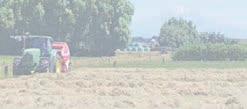

which is always keenly observed by Kiwi farmers. These mid-size machines are the backbone of local farming. While the monsters of the open fields will sell well in places like Australia and the US, it’s these three which typify the local experience.

McCormick’s X6 414 P6-Drive goes head-to-head with the New Holland T5 100 S in the utility category, and both excel as all-rounders. The third name in the utility face-off is the Basak Traktor 5120, a Turkish-made offering from a
company going back as far as 1914. Its utility tractor has already placed well at the German IF Industrial Design Awards, which recognises clever engineering.
Add to this a selection of specialist tractors for tasks as varied as steep hillside mowing, orchard spraying, olive grove tending and vineyard operations, and the competition for the title of Tractor of the Year is going to be fierce. All of the contenders are well worth a closer look just for the prestige of reaching the final cut.
Federated Farmers president Andrew Hoggard has been adamant on the economic impact of the current scheme, calling it ‘gut wrenching’


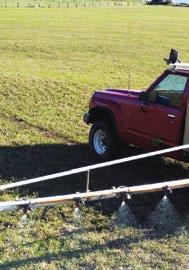


 BY ANDY BRYENTON
BY ANDY BRYENTON
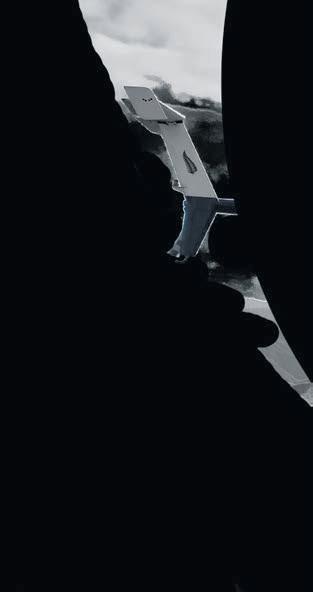
The government’s proposed emissions trading scheme has emerged in fuller detail this month, with some groups once allied to the concept reacting in horror and anger to its current form.

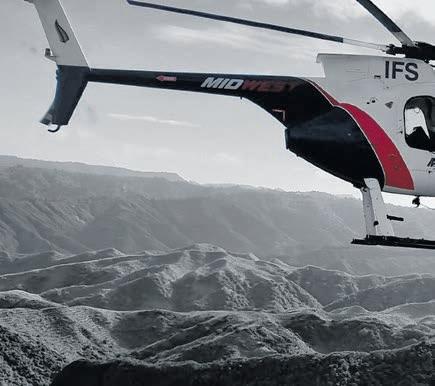

his is an important step forward in New Zealand’s transition to a low emissions future and delivers on our promise to price agriculture emissions from 2025,” said prime minister Jacinda Ardern.
“The proposal aims to give New Zealand farmers control over their farming system, providing the ability to reduce costs through revenue raised from the system being recycled back to farmers, which will fund further research, tools and technology and incentives to reduce emissions.”






However, opposition to the emissions plan and its associated levy is strong,





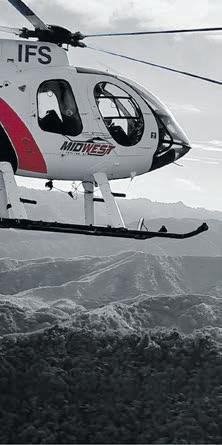


with Federated Farmers (FF) strident in its criticism, despite being a contributor in trying to formulate a bilateral climate change response strategy.



“Federated Farmers is deeply unimpressed with the government’s take on the He Waka Eke Noa proposal and is concerned for our members’ futures,” said Federated Farmers National president and climate change spokesperson Andrew Hoggard.
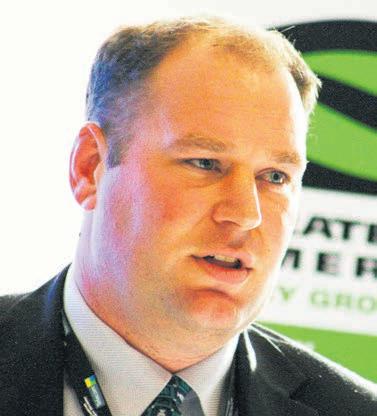
“We didn’t sign up for this. It’s gutwrenching to think we now have this proposal from the government, which rips the heart out of the work we did. Out of the families who farm this land.”













Federated Farmers’ representatives say that the knock-on effect for the economy of every small town in rural New Zealand is chilling, and worse, poorly structured modelling means that the desired climate outcomes may not be forthcoming either.
Spokesperson Bronwyn Wilson equates the national economic loss of the proposed emissions scheme to the entire New Zealand wine industry and half of the nation’s seafood fisheries being wiped out.
With farms lost, and farming-related support jobs such as freezing workers, engineers and milk factories gone too, acute poverty and unemployment are forecast.
“The greenhouse gas reduction plan released by the government this morning will rip the guts out of small town New Zealand, putting trees where farms used to be,” says Ms Wilson. “The plan aims to reduce sheep and beef farming in New Zealand by 20% and dairy farming by 5% to achieve the unscientific pulled-out-of-ahat national greenhouse gas target.”
Another core concern involves farmers not being recompensed for carbon sequestration on their farms but incentivised economically to sell up to offshore carbon forest investors. Such investors have already turned swathes of arable land into unproductive forestry, with the profits going overseas.
“We know we have a role to play in addressing climate change, and our farmers are among the first to feel the effects of it,” says Beef and Lamb New Zealand chair Andrew Morrison. “However, if farmers are to face a price for their agricultural emissions from 2025, it is vital they get proper recognition for the genuine sequestration happening on their farms.”
Beef and Lamb’s own modelling is said to show that average farms cited in the industry report were not representative of all farm classes, and that, in reality, threequarters of farms would see a profit fall of at least 10%, with those most affected facing up to 30% cuts to profit before tax.

Critics of the scheme opine that if all on-farm carbon-sequestering life was counted, including orchards, shelter belts, wetlands, riparian planting, pasture, crops and areas of bush, then carbon neutrality may already have been reached on many farms.


Dairy New Zealand chair Jim Van Der Poel emphasises the positives, while his organisation says that there is still work to do to reach a consensus and an emissions scheme which works for all.
“The government has accepted a lot of what farmers told us was important to them during our sector consultation earlier this year,” said Mr van der Poel.

“This includes a farm-level levy and a split-gas approach that prices biogenic methane separately — recognising that




its warming impact differs from that of long-lived gases, such as carbon dioxide.




“It is still proposed that any revenue generated through emissions pricing will be reinvested back into the sector to support research and development and incentivise action on-farm, that will reduce emissions; this is significant for farmers too.”
The rhetoric is far more firey on social media, with farming advocacy campaigners calling this the final betrayal of the Kiwi farmer and a manual on ‘how


to destroy New Zealand food production’. Protests involving civil disobedience and direct action, like those often experienced in France and the Netherlands, are already being discussed by more radical groups.
National Party leader Chris Luxon has fronted a press conference in which he said that a National-majority government would look at repealing any legislation introduced in line with the emissions scheme draft now out for public consultation and cleaving to a more industry-led approach.
“However, if farmers are to face a price for their agricultural emissions from 2025, it is vital they get proper recognition for the genuine sequestration happening on their farms.”
At Paparata, the last 12 months have been a battle; high temperatures plus little rainfall in the summer and autumn have meant low feed covers going into winter.

The poor old cows are only starting to get their heads above water. The meat processors have all decided a lamb is not worth killing if it doesn’t yield a carcass above 16kg. The 16kg carcass is making at least $10 more than the 15.9kg one. Last season, we sold store a number of our second and third-cut ram lambs — these lambs averaged around 35kg live weight.
They sold for more money than we would have received if we had killed them. Some buyers kept these lambs until the spring, when they were killed at 25kg-plus. These buyers were very happy and are returning. Paparata has always focussed on growth rate when selecting rams. Some mobs of lambs at Paparata have recorded daily weight gains of more than 300gms/day.
Global warming won’t go away. We are responding. Sheep expel methane that is likely to start costing the sheep farmer in the near future. It is possible to measure the methane output of individual sheep and, by selection, lower output of the flock. While it will take time to make any meaningful flock methane reductions — we think it is worth the effort.

A trailer has been built by AgResearch that has 12 chambers to test 12 sheep at a time. Each sheep spends 45 minutes in a chamber allowing the sheep’s methane output to be recorded. We have tested 120 top-ranked ram hoggets this year.

The results showed some variation in the sire groups, which would indicate progress can be made by selection.
Despite the season, this year’s sale rams are well-grown. They include some rams by Waimai sires. Please take a look at our website or phone if you would like more information.

“Global warming won’t go away. We are responding. Sheep expel methane that is likely to cost the sheep farmer in the near future.”by Amy Fifita
Farmers are anticipating a
prepare for winter grazing.
FWFP is another step to promote a better environment and aims to improve water quality throughout New Zealand. Once in place, it hopes to decrease resource consents for farmers.
The regulations are expected to be implemented by the year’s end. It will affect farms exceeding land use — five hectares for horticulture and 20 hectares for combined and arable or pastoral.
Beef and Lamb NZ (B+LNZ), DairyNZ and Federated Farmers have spoken out in support of farmers. The organisations jointly expressed on two occasions the need for an extension until November next year to Environment Minister David Parker. A recent letter to the organisations from the minister stated that the government would not be extending winter grazing regulations.
“It is highly disappointing that Minister Parker has not listened to the sector and is pushing on with these unworkable regulations, despite freshwater farm plans not being available. We are currently working through the letter’s content with our partner organisations before determining any further action,” says B+LNZ chief executive Sam McIvor.
“In our view, farmers are being put in an impossible situation by the inability to get timely consent and the promised freshwater farm plan pathway.”
Community planting schemes combine with on-farm ones to have an impact

Current requirements expect farmers to have a certified FWFP in place by early 2023. The lack of a pathway creates uncertainty for farmers, with water grazing regulations being implemented on November 1.

There will be a webinar in October consulting the sector for anyone in the industry who has questions about the introduction of FWFP.
“We need the government to deliver a freshwater farm plan framework so




farmers can use it. In the meantime, the government needs to take a practical approach to these regulations and how farmers can proceed for next season,” says DairyNZ chief executive Dr Tim Mackle.
“Most farmers are already implementing the good management
practices required in the new legislation, and farmers have come through a challenging winter very well. Regional councils are reporting that farmers have widely adopted best management practices and were well set up for winter grazing this year.”
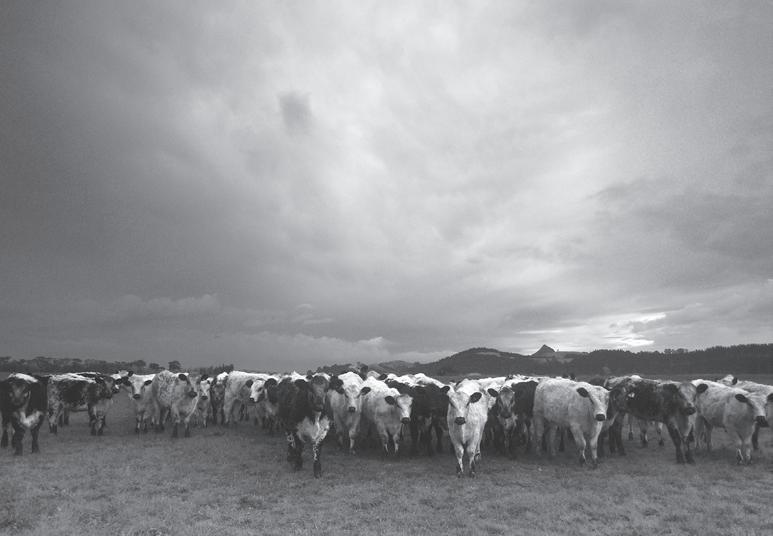
For farmers Kerry and Peter Underwood and their family, the annual Pink Ribbon, Daffodil Day Appeal and other fundraising events to support the Cancer Society are close to their hearts.


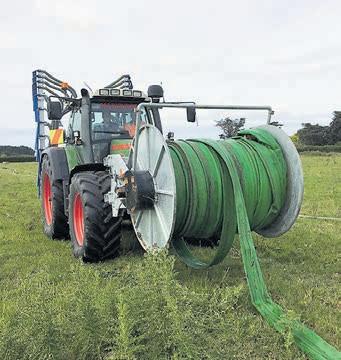
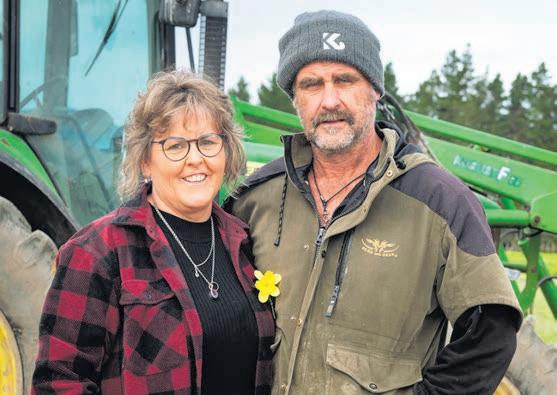
In 2018, the Underwood family’s lives were turned upside down when Kerry was diagnosed with bowel cancer.
“We have a dairy farm and run beef as well in Kaipara,” says Kerry.

“When I was diagnosed, I was referred to Northland’s Jim Carney Cancer Centre, where I completed 12 cycles of chemotherapy fortnightly over a six-month period.
“Following chemotherapy, I was referred to the Waikato District Health Board to have cytoreductive surgery with HIPEC. Through this operation, they removed the metastasised cancer lesions throughout the abdomen and performed a full hysterectomy and half of my large bowel was removed.”
Hyperthermic intraperitoneal chemotherapy — HIPEC surgery is a twostep procedure that treats certain cancers in the abdomen. Cancerous tumours are
surgically removed, and then heated chemotherapy drugs are applied directly inside the abdomen to eliminate the remaining cancerous cells.
“I was also referred to the local Cancer Society support group meeting in Maungatūroto, where I met other cancer sufferers, their friends and family. Some had recovered, some had lost loved ones, and some people were friends who needed support.
“When I was diagnosed, the doctors checked if it was genetically related due to my age at the time of diagnosis. The genetic blood test discovered I had FAP, familial adenomatous polyposis, which is a rare inherited condition.”
FAP is a predisposition syndrome characterised by hundreds to thousands of precancerous colorectal polyps.
Kerry encourages everyone to give to the Cancer Society through fundraiser events such as Daffodil and Pink Ribbon Day
“If left untreated, affected individuals inevitably develop cancer of the colon or rectum at a relatively young age. Our three
Legislative and environmental pressure is increasing to move toward 100% land-based discharge of dairy effluent. Installing and running a permanent irrigator is expensive, has huge labour involvement and on some farms, is just not practical. Our system is a permanent solution to your dairy effluent problems. Give Daniel in the office a call to discuss your effluent needs.
children were then tested, and two have it, so they had their large bowels removed as part of the prevention.”
of
adding a big job to your daily routine, let us take care of
over just a few days
and often
1,400m
Kerry had the last operation in Auckland on March 4 last year.
“It was an 11-hour operation, and they checked the lymph nodes too, and thankfully, the tests came back negative. My mum passed away in 2017 of ovarian cancer, and in 2020 we were informed that they found the BRCA1 gene on mum’s side of the family, and I am positive for that as well.”
BRCA1 — BReast CAncer gene 1 and BRCA2 — BReast CAncer gene 2 are sometimes called tumour suppressor genes because when they have certain changes, cancer can develop, most notably breast and ovarian cancer, but also several additional types of cancer.

“I am currently waiting for a double mastectomy as a preventative measure against breast cancer.
“As a family, we emotionally look after each other. We were initially hit hard, but now we have learned to live with it. Our children taking the preventative bowel surgery removed the worry, but screening will continue to monitor their duodenum every five years as polyps can appear.
“The genetics pass through the generations, so the tests will continue for the generations to come.
“We fully support Daffodil Day and other appeals because the money raised is essential to support people living with cancer.
“The last four years have been an emotional roller coaster for us, but I am doing well health-wise. At times, life has been absolutely terrible, and it was like


being in a dark hole. It has been lovely making new friends.
“Part of my healing was going back to work full-time on the farm with Peter after my big surgery in 2019. Our daughter used to milk for us, but she had a baby, so I decided to get myself fit again. I would help Peter.
“We have 155 KiwiCross dairy cows and Speckle Park and purebred Beef Shorthorn breeding cows. Working with the animals perked me up heaps and gave me incentive to get my body up and going.

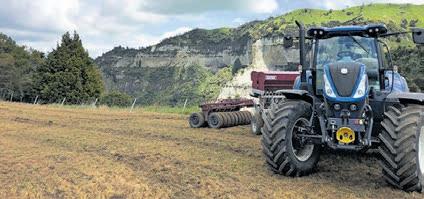
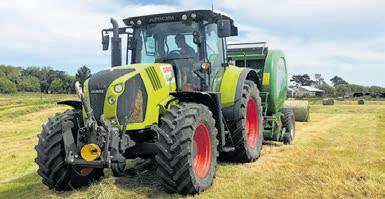
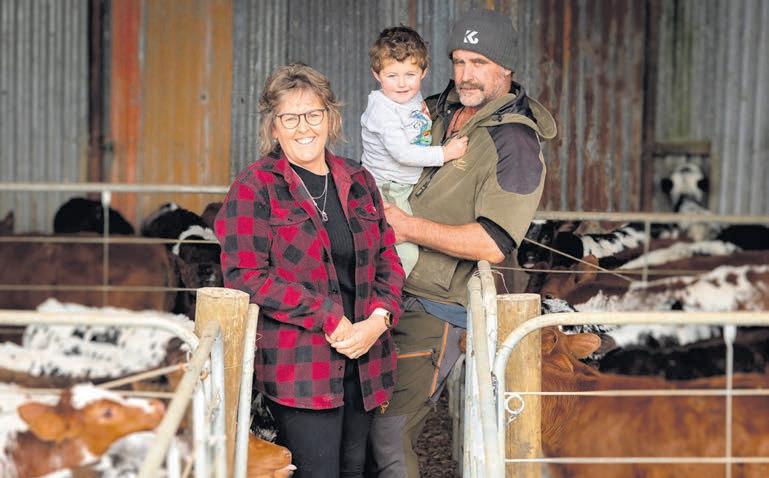

“Peter is extremely supportive, and it has been hard on him as well. From the word go, he was always very positive and encouraged me not to dwell on the negative or think too far
ahead into the future but to focus on the now.
“Our five grandchildren are also my inspiration and give me so much pleasure in life.
“Having the double mastectomy is my next step forward because I don’t want to risk further illness. We now carry on with life as normal although there are some bad days, I mostly have good days thanks to my family and friends. Without these people — it would have been worse.
“I really encourage people to give to the Cancer Society appeals and get along to a support group if you need to.”
For more information or to support the Cancer Society, go to cancer.org.nz.



